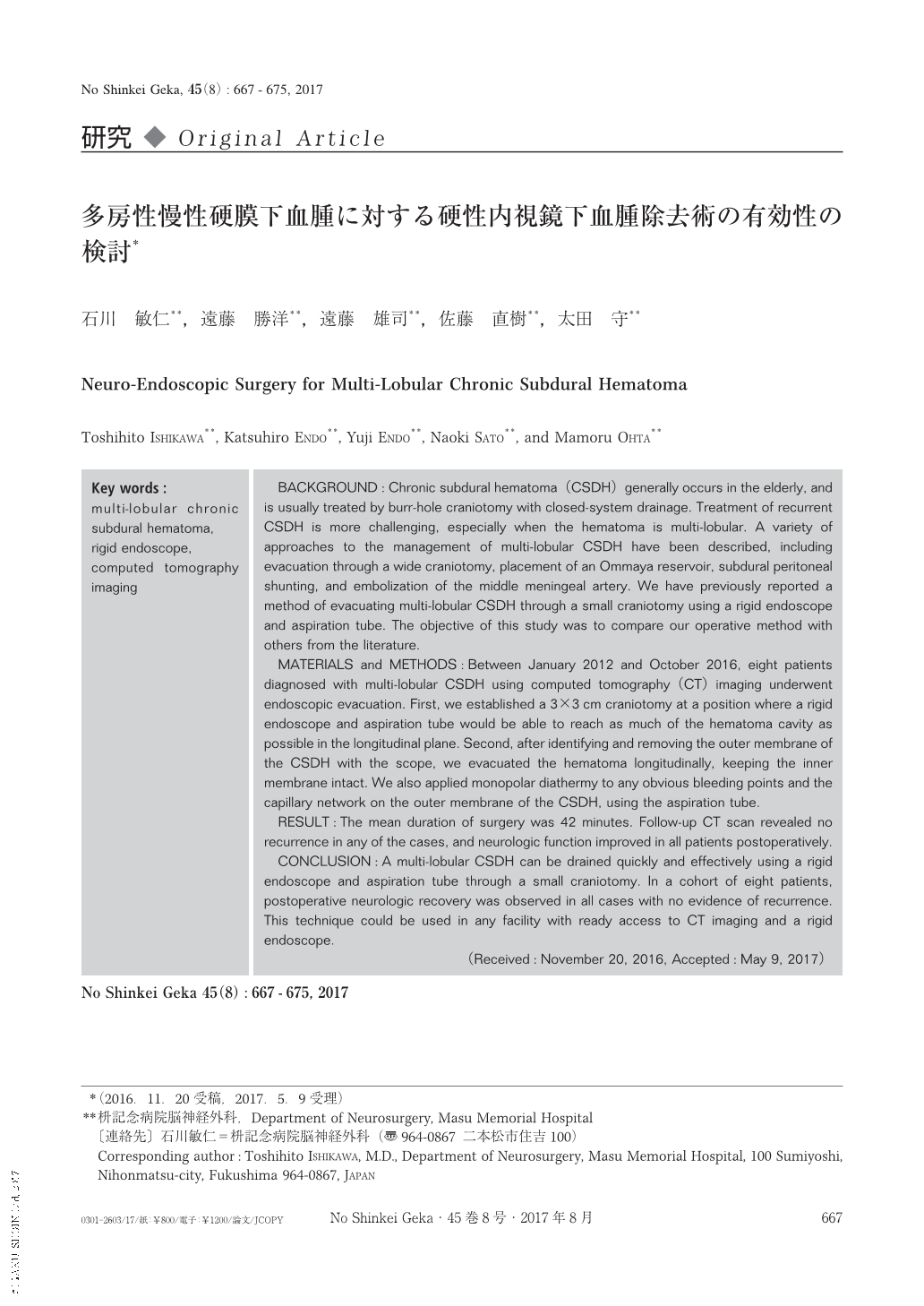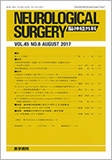Japanese
English
- 有料閲覧
- Abstract 文献概要
- 1ページ目 Look Inside
- 参考文献 Reference
Ⅰ.緒 言
慢性硬膜下血腫は,臨床現場において最も頻繁に遭遇する頭蓋内疾患である.近年,この疾患の高齢者の割合が年々増加しており,手術の際には,高齢者が抱える全身性合併症が問題になってきている.慢性硬膜下血腫の初期治療としては穿頭血腫ドレナージ術が一般的であり,良好な治療成績が報告されている.しかし,再発率は10〜20%と比較的高率であり8),穿頭血腫ドレナージ術に対して難治性を示す症例も散見される1,3,7,9,10,12).過去の報告によると,上記手術に対して難治性を示す症例には,大開頭術など,さまざまな手術が施行されている4,5,14).今回われわれは,CT所見から多房性慢性硬膜下血腫と診断し,穿頭血腫ドレナージ術のみでは治療困難と判断した症例に対して,硬性内視鏡を使用した血腫除去術を施行して,良好な経過を得た.その有用性について文献的考察を加え検討したので報告する.
BACKGROUND:Chronic subdural hematoma(CSDH)generally occurs in the elderly, and is usually treated by burr-hole craniotomy with closed-system drainage. Treatment of recurrent CSDH is more challenging, especially when the hematoma is multi-lobular. A variety of approaches to the management of multi-lobular CSDH have been described, including evacuation through a wide craniotomy, placement of an Ommaya reservoir, subdural peritoneal shunting, and embolization of the middle meningeal artery. We have previously reported a method of evacuating multi-lobular CSDH through a small craniotomy using a rigid endoscope and aspiration tube. The objective of this study was to compare our operative method with others from the literature.
MATERIALS and METHODS:Between January 2012 and October 2016, eight patients diagnosed with multi-lobular CSDH using computed tomography(CT)imaging underwent endoscopic evacuation. First, we established a 3×3cm craniotomy at a position where a rigid endoscope and aspiration tube would be able to reach as much of the hematoma cavity as possible in the longitudinal plane. Second, after identifying and removing the outer membrane of the CSDH with the scope, we evacuated the hematoma longitudinally, keeping the inner membrane intact. We also applied monopolar diathermy to any obvious bleeding points and the capillary network on the outer membrane of the CSDH, using the aspiration tube.
RESULT:The mean duration of surgery was 42 minutes. Follow-up CT scan revealed no recurrence in any of the cases, and neurologic function improved in all patients postoperatively.
CONCLUSION:A multi-lobular CSDH can be drained quickly and effectively using a rigid endoscope and aspiration tube through a small craniotomy. In a cohort of eight patients, postoperative neurologic recovery was observed in all cases with no evidence of recurrence. This technique could be used in any facility with ready access to CT imaging and a rigid endoscope.

Copyright © 2017, Igaku-Shoin Ltd. All rights reserved.


